
Here is how the most common types of bulbs compare:
Brightness and Efficiency
Because bulbs vary in their efficiency, it’s best to compare bulbs based on their light output (lumens) rather than their wattage (amount of energy used). The higher number of lumens, the brighter the light will be. Higher wattage bulbs use more energy. Here’s how bulbs compare.
Color Choices
Traditional incandescent bulbs emit a “warm” color. Today, bulbs are available in a range of colors:
|
Soft/Warm White The standard color of incandescent bulbs |
Cool White Good for kitchens and work spaces |
Daylight Good for reading and work spaces |
| 2700K | 4000K | 6000K / 6500K |
Shape Choices
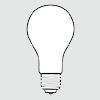 A-Line (A19 or omnidirectional) bulbs disperse light at a wide angle and are ideal for fixtures used to spread light throughout the room. A-line bulbs are a good choice for room area-lighting, reading lamps, and hallways.
A-Line (A19 or omnidirectional) bulbs disperse light at a wide angle and are ideal for fixtures used to spread light throughout the room. A-line bulbs are a good choice for room area-lighting, reading lamps, and hallways.
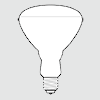 Spotlights (BR30, BR40) concentrate light in a small area to produce a bright spot of light. Spotlights are a good option for track lighting and overhead recessed lighting.
Spotlights (BR30, BR40) concentrate light in a small area to produce a bright spot of light. Spotlights are a good option for track lighting and overhead recessed lighting.
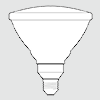 Floodlights (PAR30, PAR38) cast a wider directional light than spotlights. Floodlights are ideal for recessed lighting, outdoor lighting, landscape lighting, and motion sensors.
Floodlights (PAR30, PAR38) cast a wider directional light than spotlights. Floodlights are ideal for recessed lighting, outdoor lighting, landscape lighting, and motion sensors.
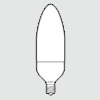 Candelabra and Miniature Candelabra bulbs (E12) imitate the shape of a candle and provide ambient and accent lighting. They are for use in decorative lighting fixtures, including wall sconces, decorative fixtures and chandeliers.
Candelabra and Miniature Candelabra bulbs (E12) imitate the shape of a candle and provide ambient and accent lighting. They are for use in decorative lighting fixtures, including wall sconces, decorative fixtures and chandeliers.
Bulb Base Choices
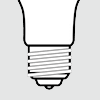 Medium (E26) – The bulb base design for standard light bulbs, used in most lamps and overhead light fixtures.
Medium (E26) – The bulb base design for standard light bulbs, used in most lamps and overhead light fixtures.
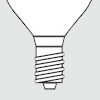 Candelabra (E12) – A slightly smaller bulb base, used in chandeliers, light sconces and other small fixtures.
Candelabra (E12) – A slightly smaller bulb base, used in chandeliers, light sconces and other small fixtures.
